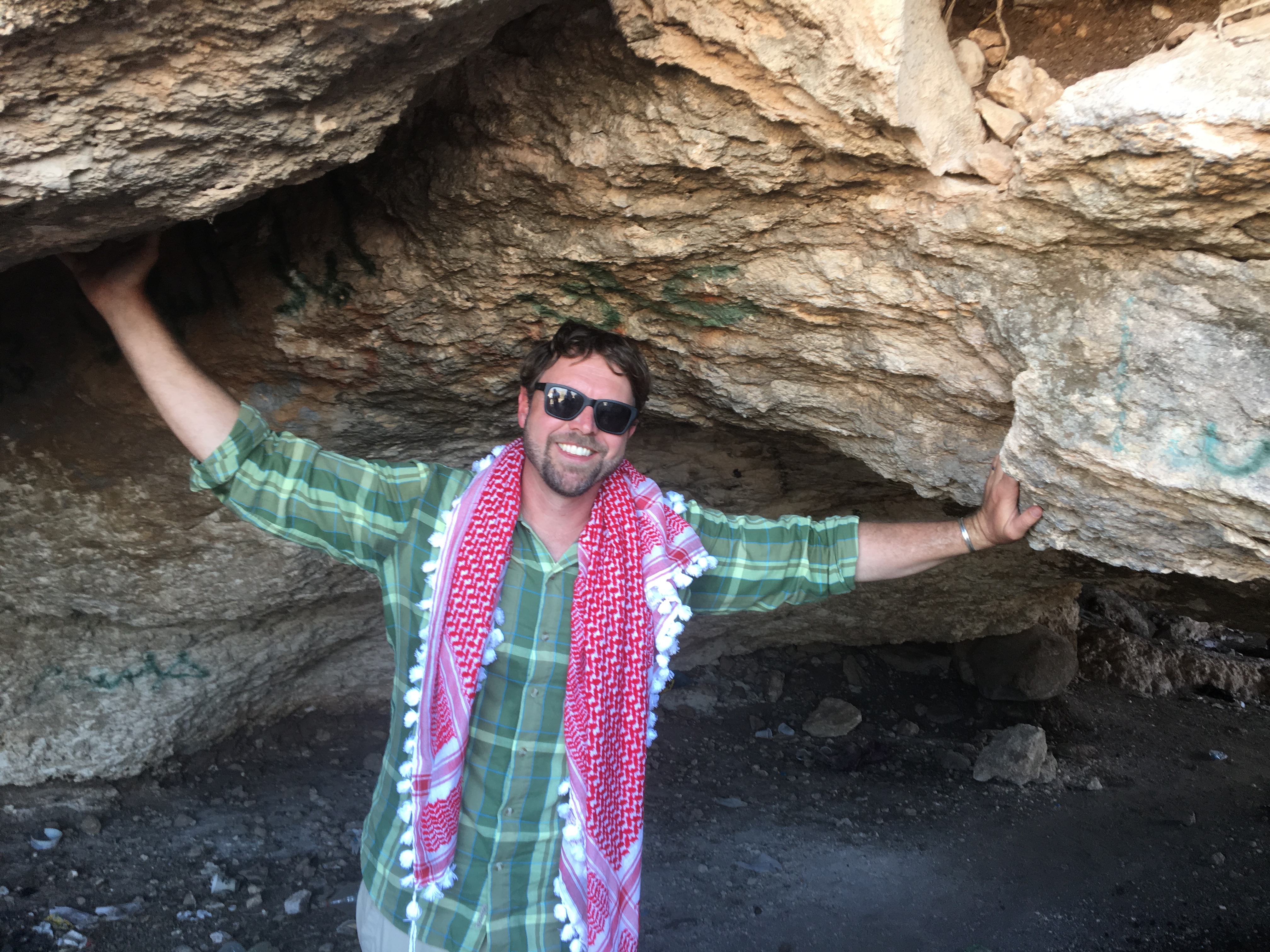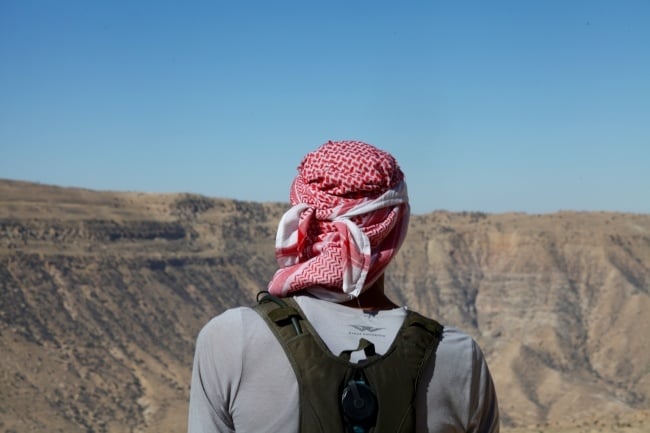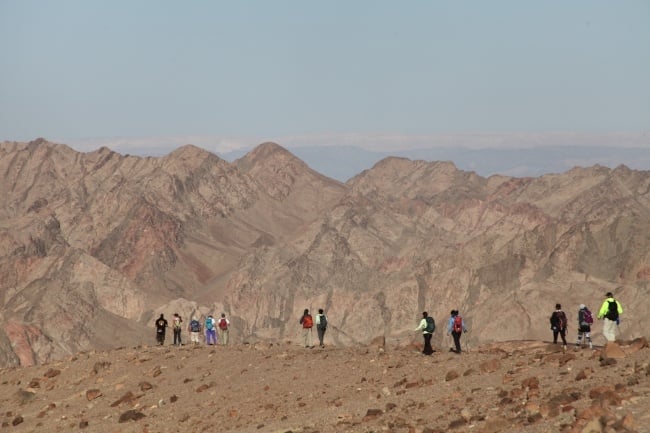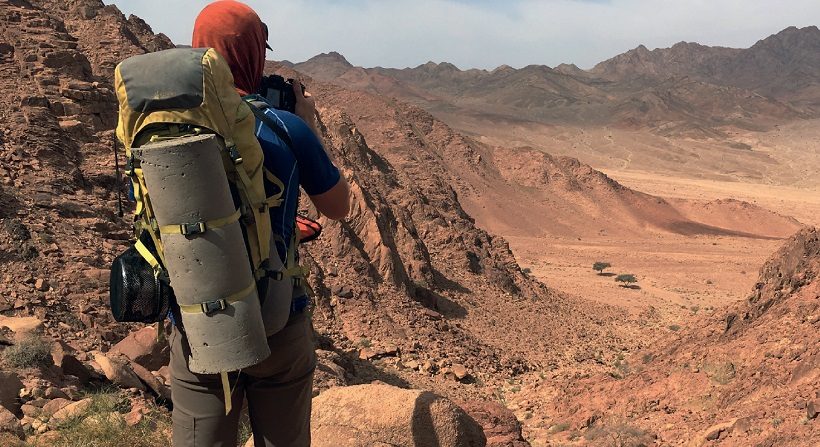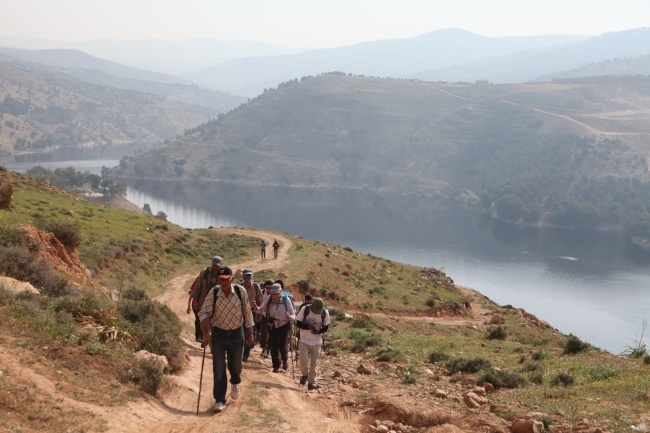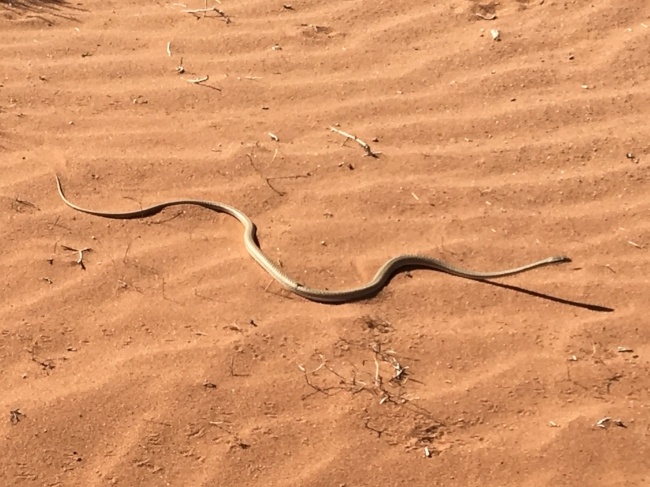 In all my life, I have never felt this small—by day, I am nothing more than a sweaty speck on the land, and at night, a single star shining from a million miles away seems bigger than me, down here on Earth, alone in my tent.
In all my life, I have never felt this small—by day, I am nothing more than a sweaty speck on the land, and at night, a single star shining from a million miles away seems bigger than me, down here on Earth, alone in my tent.
Hiking each morning, I look back at the footprints I have left behind—imprecise and clumsy ovals that evaporate with gravity and wind. I compare my own wavy trail to the neat stitched patterns of lizard feet that seem to hold the entire desert together—and I remember that lizards have walked here for millions of years longer than my own species.
We have begun to see snakes—dozens of them—small, slender, and non-venomous, the exact same color and shape of the twisted branches on the low scrub that grips the rolling dunes. I watch the olive serpents lift their heads, curious and shy, then zip away, disappearing into silence.
Like a snake, I shed inches of scaly skin from my feet every night. After nearly six weeks of nonstop hiking, my calluses are as thick as shoe treads, and my heels and toes are dyed a strange crimson-orange.
Jordan is the reddest place I know—practically Martian—and now here, in the far south, the red is trapped in the cells of my own feet. The red-orange sand fills the corner of my tent, it gathers in my ear canal, gums up my nostrils, grits up the open holes of my phone, camera, and computer. It clogs the zippers on my backpack and pours out of empty pockets and shoes. One day, a white puppy follows us into the desert, and then leaves, as pink as a rosebush.

The color shifts by the hour, with moments of chalk white, then nude, ochre, salmon pink, and red brick. We walk across land as hard as an over-baked cookie, and other times, my feet fall backwards into the warm sand, ankle-deep, so that every step takes twice the effort.
Sand is the base element of Jordan—the primordial substance from which the whole country is built. The small patches in between the rocks soon join up into rivers and lakes of sand, until finally we hit the one true desert with its rising red dunes the size of football stadiums.
The map says that we are on the edge of the Great Arabian Desert, the quiet ocean of sand, rippled like waves, surrounded by tall and lumpy mountains that resemble towering piles of chocolate and strawberry ice cream, melting in the sun. The geography of sand is intricate and weird, with smooth pink-yellow canyons that envelope us in cooling shade for a while before spitting us back out into a scorching rock-scattered plain of no relief. The sandstone cliffs echo our voices, so that song or a shout comes back at us, booming off these walls that rise up as tall as New York City skyscrapers. The cliffs are magnificent, band yet we are the only ones around to acknowledge their greatness—for a week, it seems, our tiny group of hikers are the only inhabitants in Jordan’s best neighborhood.
-719894-edited.jpg?width=650&height=402&name=IMG_6039%20(1)-719894-edited.jpg)
From the beginning of this journey, I promised myself that I would never have a “favorite” section of the Jordan Trail—that I would approach the entire country with equal affection, admiration, and awe. But now that I have walked nine-tenths of the entire trail, I can say with confidence that this lingering eight-day trek through the wilderness between Petra and Wadi Rum has proven the most sensational in terms of landscape, heat, and sheer immensity.
None of us can stop saying “wow”—sometimes we say it out loud, breaking the long silence as we trudge through the sand for several hours. We go in and out of conversation, discussing and comparing the “wow-ness” factor of each new scene that opens up before us.
“So much wow-ness,” says Duha, one of the first women ever to thru-hike the Jordan Trail, and who has come joined us for much of our thru-hike. We all agree with Duha, but there is more wow-ness to come, further down the trail.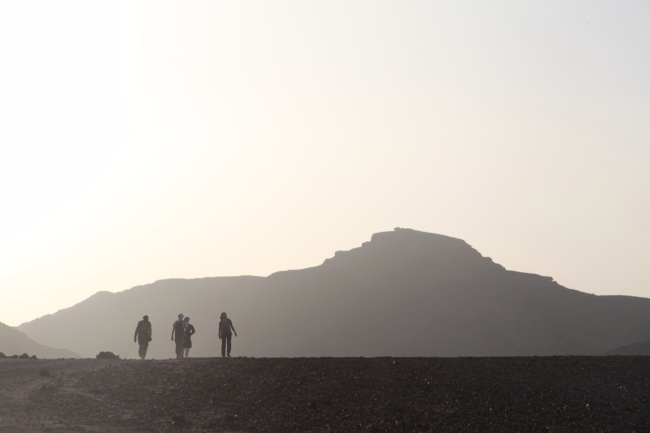
One morning, after setting off at five in the morning and walking for a good 10 km, we dip into some shade for a rest and a quick cup of tea. All of us sit and wait there, watching the gargantuan horizon of crumbling mountains towering above a slender sand dune that is calling to us, begging to be disturbed.
First Anna and Duha head up the hill, and then I soon follow. Already, Anna is laughing, twirling into flimsy cartwheels. I attempt a cartwheel as well, my hands dropping into the hot red sand and lifting my entire boy back into the air.
“This will hurt tomorrow,” I think. I try to remember the last time I turned a cartwheel. Was it in gym class, some thirty years ago? No matter—I keep trying, performing cartwheels, somersaults, and then rolling like a log all the way down the mountain, spinning my body furiously until I crash land with a puff of red dust. I can barely breathe I am laughing so hard, and one by one, the others join us—all of them leaving the shade for the pure joy of a virgin sand dune.
We are grown-ups—some of us in our twenties, some of us in our forties, and some of us in our seventies—but for now we are all kids, tearing up the biggest sandbox on Earth, running and leaping skyward, falling unharmed in the soft sugary dune, then wrestling, tumbling, and collapsing with the exhausted sigh of children at play. For days we have stayed focused on the important logistics of hiking—measuring out daily distances, ingesting enough water and calories for the task at hand, and then walking around the hottest part of the day—but for this one hour we let loose and play on the dunes, unheard and unseen by anybody else in the world.
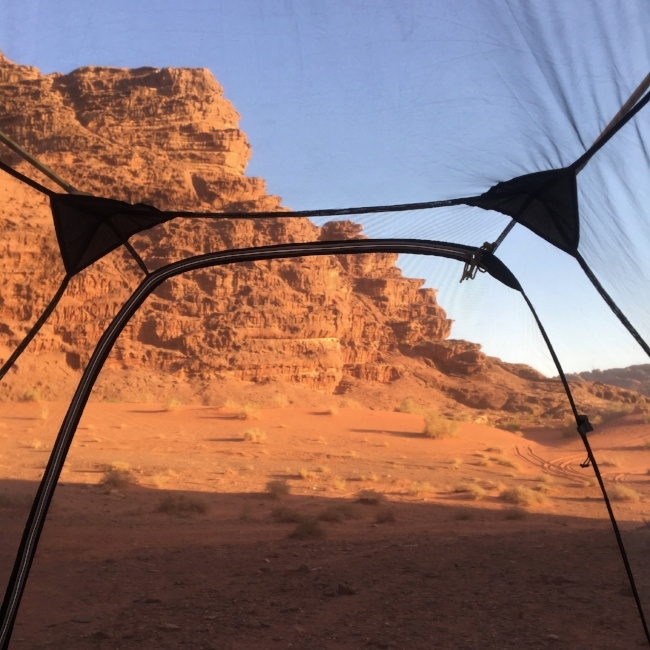
The blessing of this wilderness is the solitude it allows, far from any city’s lights or noise or stress. I can drop to my back and spread my arms, making an angel in the sand just as I used to make angels in the snow and nobody will ever see it. Tonight, the changing wind will make this all disappear, along with the circling footprints of our playtime, while this dune will live on forever—beyond any of our lifetimes. Only the Jordan Trail will remain, forever leading hundreds and thousands of hikers through this same pile of sand. I can only hope that they will also take the time to stop—for the stopping and waiting and watching are just as much a part of the trail as the walking. I imagine the dune will call out to them, as it did to us. The future hikers will see the teardrop-shaped pile of sand, and like us, they will feel compelled to stop, to dig their hands and toes into the sand, and then to play, unabashed.
And then, like us, they will carry on, pouring the sand from their boots, tying up their laces, hefting their packs on their backs, and then heading westward, across the desert, to the place where the wind blows in from the sea.
Follow my personal adventure on social media with #AndrewWalksJordan and #ThruJT and on the Andrew Walks Jordan homepage.

